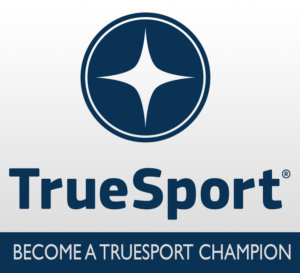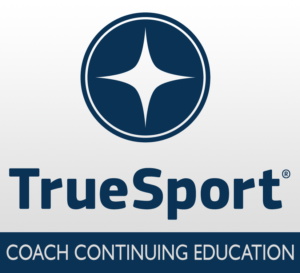5 Surprising Things You Need to Know About Nutrition Buzzwords
USA Cheer has partnered with TrueSport, to provide new educational tools to equip coaches, parents and young athletes with the resources to build life skills and core values for success in sports and in life. TrueSport, a movement by the U.S. Anti-Doping Agency, inspires athletes, coaches, parents, and administrators to change the culture of youth sport through active engagement and thoughtful curriculum based on cornerstone lessons of sportsmanship, character-building, and clean and healthy performance, while also creating leaders across communities through sport.
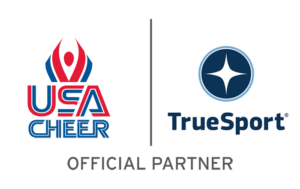
5 Surprising Things You Need to Know About Nutrition Buzzwords

TrueSport Expert Kristen Ziesmer
Walking through the aisles at the grocery store, you’re confronted with dozens of terms and phrases that are all trying to suggest that a certain food is healthier than another. Some are labeled clean, some are labeled paleo-friendly, some are labeled GMO-free or organic. But what do these nutritional buzzwords really mean, and why does it matter for you as the parent of a young athlete? TrueSport Expert Kristen Ziesmer, a registered dietitian and board-certified specialist in sports dietetics, often hears from concerned parents and has realized that many of the buzzwords labeling our foods today have created a lot of misinformation about nutrition.
Before we look at specific buzzwords that are commonly used today, it’s important to understand why these buzzwords matter. First, the use of these words isn’t regulated, or the terms aren’t regulated the way you may assume. For example, any food with a label that reads ‘clean’ (or that’s referred to as clean) has no regulations surrounding that label. Second, these words can cause certain foods or supplements to have a ‘health halo.’
Here’s what you need to know about some common nutrition buzzwords.
1. Clean
’Clean’ makes its way onto labels and onto the covers of cookbooks with stunning frequency these days, but it has no official definition as it applies to food. “Clean has zero technical meaning whatsoever,” Ziesmer says. “And everyone’s definition of clean is so different based on someone’s biased opinion of what good nutrition is.” Just because something claims to be clean doesn’t mean it’s actually healthy, or that it’s healthy for your athlete. Ziesmer also notes that calling certain foods ‘clean’ implies that other foods are ‘dirty’ or ‘bad.’ Setting up this black-and-white view of foods can lead to disordered eating patterns for athletes, and cause confusion around what they need in order to fuel for the work that they’re doing.
2. Cleanse/Detox
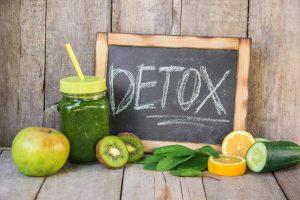 Rest assured that your athlete doesn’t need a cleanse. And if they did need to rid their body of certain toxins, the juice section of the grocery store wouldn’t be the place to do it. From single serving juice shots that promise gut or liver detoxifying to week-long juice cleanses, the idea of ‘cleaning’ the body and ‘ridding it of toxins’ has become more prominent in recent years, but “the body already has its own natural detoxification system,” explains Ziesmer. “Those systems certainly could get overloaded if your athlete has a medical condition, but that’s where you would want to be working with a medical professional and not doing a juice cleanse for three days. Toxic mold exposure won’t be solved by drinking celery juice: You need to see a doctor.”
Rest assured that your athlete doesn’t need a cleanse. And if they did need to rid their body of certain toxins, the juice section of the grocery store wouldn’t be the place to do it. From single serving juice shots that promise gut or liver detoxifying to week-long juice cleanses, the idea of ‘cleaning’ the body and ‘ridding it of toxins’ has become more prominent in recent years, but “the body already has its own natural detoxification system,” explains Ziesmer. “Those systems certainly could get overloaded if your athlete has a medical condition, but that’s where you would want to be working with a medical professional and not doing a juice cleanse for three days. Toxic mold exposure won’t be solved by drinking celery juice: You need to see a doctor.”
3. Superfood
It seems like every week, there’s a new food that’s been granted the title of superfood. From kale to chia seeds, there are plenty of foods that have risen in popularity in recent years. And while many of these so-called superfoods do have health benefits, there’s no specific designation that makes a food ‘super.’ Rather, it’s a marketing strategy employed by experts to sell more of a specific food. “Honestly, every whole food can be considered a superfood when you break it down,” says Ziesmer. “Blueberries and strawberries are packed with fiber and antioxidants. Kale has a ton of micronutrients and fiber. But when these foods get put in the spotlight and called ’superfoods,’ we tend to overdo them at the cost of eating a wider variety of foods in a day.” And again, because there’s no regulations around the term ’superfood,’ it’s easy for marketers to slap that moniker on every product or supplement they’re producing.
4. Anything labeled Paleo/Keto/Whole30/Vegan/Gluten-Free
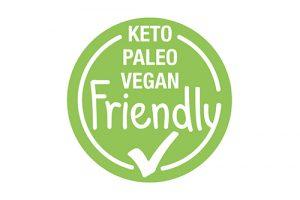 “If you go to the grocery store and look at labels, you’ll see things like Paleo-friendly, Whole30 approved, Keto-friendly, vegan, or gluten-free,” says Ziesmer. “That’s not necessarily bad, but it is misleading because it creates this health halo around the product. Something that’s vegan can be packed with sugars and saturated fats, as can something that’s gluten-free. Unless you are gluten intolerant, the gluten-free bread is not healthier than the loaf of whole wheat bread.” She also adds that for a young athlete, unless advised by a doctor or dietitian for some medical reason, there’s no reason to adhere to a Whole30 or keto diet, since those diets cut out most of the carbohydrates a young athlete needs to perform at their best.
“If you go to the grocery store and look at labels, you’ll see things like Paleo-friendly, Whole30 approved, Keto-friendly, vegan, or gluten-free,” says Ziesmer. “That’s not necessarily bad, but it is misleading because it creates this health halo around the product. Something that’s vegan can be packed with sugars and saturated fats, as can something that’s gluten-free. Unless you are gluten intolerant, the gluten-free bread is not healthier than the loaf of whole wheat bread.” She also adds that for a young athlete, unless advised by a doctor or dietitian for some medical reason, there’s no reason to adhere to a Whole30 or keto diet, since those diets cut out most of the carbohydrates a young athlete needs to perform at their best.
5. Organic versus Non-GMO
 These buzzwords can be confusing because most people assume that they mean the same thing, but they do differ in important ways. Essentially, organic food is always non-GMO, but non-GMO food isn’t necessarily organic. A non-GMO tomato is simply not a genetically modified organism, meaning the plant hasn’t had its structure changed. However, a non-GMO tomato may still be sprayed with chemical pesticides and planted in chemically fertilized soil. On the other hand, an organic tomato will be non-GMO and will be free of any pesticides or other manmade chemicals.
These buzzwords can be confusing because most people assume that they mean the same thing, but they do differ in important ways. Essentially, organic food is always non-GMO, but non-GMO food isn’t necessarily organic. A non-GMO tomato is simply not a genetically modified organism, meaning the plant hasn’t had its structure changed. However, a non-GMO tomato may still be sprayed with chemical pesticides and planted in chemically fertilized soil. On the other hand, an organic tomato will be non-GMO and will be free of any pesticides or other manmade chemicals.
“The FDA does say that GMO foods are perfectly safe,” says Ziesmer. “From a health perspective, I prefer organic options since it’s better for your system to skip the extra chemicals. However, if you can’t afford organic options, don’t avoid fruits and vegetables because of that. Just do the best that you can.”
Takeaway
When shopping at the grocery store, beware of labels like ‘clean’ or ’superfood,’ as these words have no technical meaning and are used for marketing purposes. It’s also important to understand the benefits (organic) or lack thereof (detoxifying) of foods with these labels.
What is TrueSport?
The TrueSport Champion Network is a community of coaches, parents, program directors, and athletes who believe in the power of youth sport to build life skills and core values for success both on and off the field. Join TrueSport Champion Network to help promote the positive values of cheer, dance, and STUNT!
The TrueSport Coaching Education Program empowers coaches—the most significant influencers in young athletes’ lives—with a transformative learning opportunity to obtain the knowledge and resources to cultivate, champion, and uphold the rich promise and highest potential of sport.
Additional Training Modules from TrueSport
USA Cheer is proud to partner with USADA’s TrueSport® to bring relevant educational content to the Cheer and STUNT community in order to promote a positive youth sport experience. We are excited to provide access to TrueSport’s experts that take coaching beyond skills and help truly develop the overall athlete by building life skills and core values for success on and off the mat, sideline, field, and court.
Feel free to share these resources with your coaching staff, parents, or athletes!
About TrueSport
TrueSport®, a movement powered by the experience and values of the U.S. Anti-Doping Agency, champions the positive values and life lessons learned through youth sport. TrueSport inspires athletes, coaches, parents, and administrators to change the culture of youth sport through active engagement and thoughtful curriculum based on cornerstone lessons of sportsmanship, character-building, and clean and healthy performance, while also creating leaders across communities through sport.
For more expert-driven articles and materials, visit TrueSport’s comprehensive library of resources.
This content was reproduced in partnership with TrueSport. Any content copied or reproduced without TrueSport and the U.S. Anti-Doping Agency’s express written permission would be in violation of our copyright, and subject to legal recourse. To learn more or request permission to reproduce content, click here.


